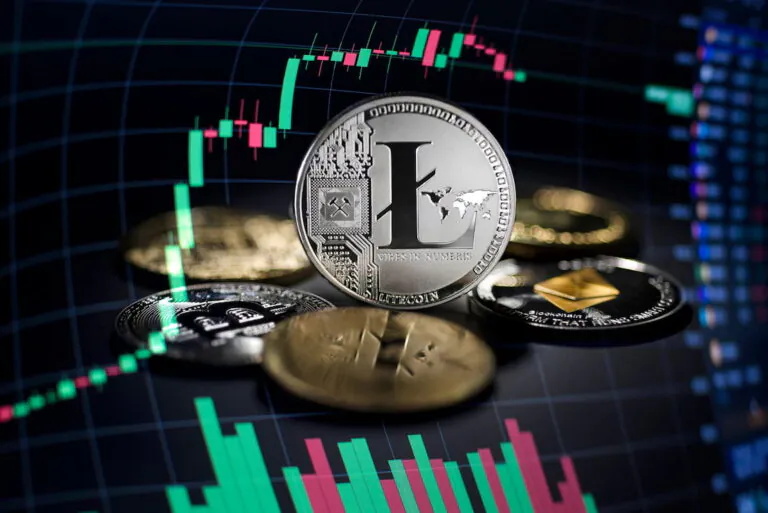The Ethereum blockchain is a distributed ledger system designed to create decentralized applications. One of its main goals was to facilitate money transfers and get rid of intermediaries during transactions in global financial systems. One of the cofounders of Ethereum is Anthony Di Iorio.

Lisk in Focus: Evolution of Technology and Investment Prospects
Originally conceived as an alternative payment method, the first cryptocurrency took on new horizons with the advent of Ethereum and its distributed ledger technology. However, many subsequent competitors proved to be variations of ETH with minor changes. Standing out in this industrial struggle is a project that offered truly innovative approaches to smart contracts – Lisk. This cryptocurrency aims to become the parent blockchain for numerous independent initiatives. In this overview, we will explore the unique features of this ecosystem, examine its role in the evolution of the crypto industry, discuss the prospects it offers, and how it raises the standards of blockchain technology by presenting new possibilities for decentralized projects.
Cryptocurrency Lisk (LSK): Path to Innovations and Opportunities
Cryptocurrencies have opened doors to new technological horizons, and one such example is LSK, whose potential prospects captivate both experts and investors. Let's delve into the key characteristics of Lisk and discuss how it brings innovation to the world of blockchain technologies.
Lisk (LSK) possesses several important features that make it unique in the world of cryptocurrencies. The emission of LSK is unlimited, meaning that new coins will continue to emerge over time. This aspect may attract the attention of investors seeking assets with long-term potential. The Delegated Proof of Stake (DPoS) consensus mechanism ensures high network performance and efficient blockchain management. The cryptographic algorithm SHA-256 provides transaction security and protection against hacking. The block generation time is only 10 seconds, facilitating the fast and efficient operation of the network. Presence on multiple major exchanges allows for convenient buying and selling of LSK. One key feature is that it is not a token but a fully-fledged cryptocurrency with its own blockchain. It started its journey as a fork of Crypti (XCR) but quickly surpassed its predecessors.
Powerful Capabilities of the Lisk Platform for Blockchain Solutions
One of the main features of the Lisk platform is its ability to empower anyone to create their own sidechain and token, enriching the blockchain ecosystem with unique solutions. To facilitate the development and implementation process, the platform provides a set of tools.
Key Tools:
- Lisk Commander: A command-line interface that provides access to the Lisk core, offering control over the creation and management of sidechains.
- Lisk Core: An API for developers that allows the customization of blockchain parameters and its launch, facilitating the creation of individualized solutions.
- Lisk Elements: A collection of libraries that interact with Lisk Core, encompassing various consensus mechanisms to ensure stability and security.
Unique User Options:
Lisk Nano Wallet Creation: Creating a Lisk Nano wallet enables users to obtain a Lisk ID, granting the right to vote for delegates – nodes that ensure cryptocurrency mining. This enhances democratic principles and participation in the network.
Easy Access through Lisk Hub:
With a Lisk ID, users gain access to Lisk Hub, a platform with hot wallet functionality and a block explorer. Here, users can easily manage assets, make payments, and in the future – exchange tokens on a decentralized exchange.
Collaboration and Integration:
Fascinatingly, the platform collaborates with the technology leader Microsoft, integrating into Microsoft Azure. This opens the door for developers to utilize Azure infrastructure and create innovative applications based on Lisk technology.
The platform not only provides tools for creating sidechains and tokens but offers a whole ecosystem for innovation and collaboration. The powerful tools and capabilities provided by Lisk pave the way for future decentralized solutions, establishing a reliable foundation for blockchain developments at the global standards level.
Sidechain: Innovative Solution in the Cryptocurrency World
A sidechain is a relatively new development in the cryptocurrency world, offering numerous exciting possibilities. The technology of sidechains allows us to achieve several important goals that may have seemed impossible before.
The primary objective is to create sidechains with slightly modified rules, distinct from the parent blockchain. This is akin to a hard fork but with backward compatibility, simplifying upgrades and enhancements. One key feature of the technology is the ability to facilitate two-way exchanges between the child and parent chain. This opens doors for more flexible and rapid operations between blockchains. Additionally, it enables the merging of two or more blockchains into a unified economic system, creating interconnected and interacting blockchains, expanding the network's capabilities.
By opening new possibilities for creating networks with enhanced features and swift operations, this innovation overcomes limitations, allowing blockchains to interact more efficiently and harmoniously.
DPoS in Lisk: Efficient Consensus Mechanism for Sustainable Development
In the world of blockchain technologies, new methods are continually developed to ensure the security and fairness of networks. One innovative mechanism for network security and fairness is Delegated Proof of Stake (DPoS), finding application in the blockchain. Let's explore how DPoS differs from the standard Proof of Stake (PoS) and how it contributes to the development of Lisk.
DPoS is an evolution of Proof of Stake (PoS), providing new opportunities and improved efficiency. In Lisk, DPoS is implemented as a consensus mechanism that significantly differs from traditional mining. The main distinction of DPoS is that forging (or mining) is carried out by only a small number of delegates, specifically 101. These delegates are chosen through voting, ensuring decentralization and fairness. An important aspect of DPoS is the fixed transaction processing fee, set at 0.1 LSK. This ensures transparency and predictability for users. The emission of LSK coins is unlimited, and the annual inflation rate is 1.97%. Control over emission helps maintain network stability.
In the Lisk blockchain, DPoS ensures decentralization, efficiency, and stability. Innovative mechanisms like DPoS continue to shape the future of cryptocurrencies and blockchain technologies, making them more accessible and sustainable for all participants.
Lisk Liquidity: Past, Present, and Future
For a long time, the Lisk platform was considered a potential competitor to Ethereum, attracting interest from many experts. However, despite its ambitions, Lisk faced some challenges that impacted user trust and its market value. Let's examine how the dynamics have changed and what forecasts can be made for the future of the Lisk cryptocurrency.
The launch of Lisk held great promise and drew comparisons to Ethereum. However, even during the ICO boom, the platform struggled to gain an audience. The peak price in early 2018, surpassing $38, now seems like a distant memory, as the current value of Lisk is $1.39.
With the emergence of new projects like TRON and EOS offering attractive conditions for decentralized application (dApp) development, the cryptocurrency platform landscape began to shift. Lisk faced increased competition, and prospects for its market value growth came into question.
As of today, Lisk is confronting challenges. While some analysts are skeptical, believing that the growth prospects for the Lisk cryptocurrency may be limited, others see potential for speculation-driven market growth.
The history of Lisk is a narrative of challenges and opportunities. Despite difficulties, Lisk remains an active participant in the cryptocurrency world, and its future may depend on its ability to adapt to the rapidly changing industry and attract new users.
Lisk Mining: Participation and Opportunities
Mining Lisk is a unique process that allows participants in this cryptocurrency platform to actively contribute to the security and stability of the network. Let's explore how Lisk mining works and the steps one needs to take to become part of this innovative ecosystem.
Lisk mining is based on the DDPoS algorithm, meaning that only delegates, selected through voting, have the right to forge (generate blocks). Owners of the LSK cryptocurrency can participate in voting for delegates.
Voting for delegates takes place in the Lisk Nano Wallet, following specific rules. Users can vote for up to 33 candidates from the list of 101 presented. It's important to note that participants can vote for multiple delegates, not just one.
To become a delegate, candidates must register on the official lisk.io website. After registration, they download the Lisk Nano Wallet, where they are automatically assigned a Lisk ID. To complete the registration, a deposit must be made, the amount of which is individually determined for each vote.
Delegates are divided into two types: active and passive. Active delegates are the top 101 candidates who have garnered the most votes. The remaining nodes are passive or reserve delegates.
Elected delegates have a unique opportunity to organize mining pools and mine LSK. The mined cryptocurrency is distributed among pool participants in proportion to their wallet balances, and their earnings constitute 5% of the total amount.
In the early days of its journey in 2016, the block generation reward was 5 LSK. This reward decreases by 1 LSK annually until it reaches a minimum value of 1 LSK. After reaching this point, the reward size no longer changes.
Mining Lisk (LSK) provides participants with a unique opportunity to actively influence the security and stability of the network by participating in the selection of delegates. This process opens new horizons for participants, allowing them to interact with innovative technology and become part of the decentralized Lisk ecosystem.
Where to Buy and Price Forecast for Lisk Cryptocurrency
The Lisk cryptocurrency is a project that attracts the attention of investors and traders in the cryptocurrency markets. Let's explore where to buy Lisk coins and the potential price prospects for this innovative cryptocurrency.
Lisk actively trades on major cryptocurrency exchanges, including:
- Binance
- UPbit
- Bittrex
- Bit-Z
- Poloniex
- LiveCoin
- HitBTC
- YoBit.net
Especially active trading occurs on Binance, where the daily trading volume exceeds $86 million.
As for the future price of LSK, it's challenging to predict definitively. Its dynamics will depend on the efforts of developers and their ability to collaborate with key companies, such as Microsoft. In the case of a successful partnership, the LSK price may continue to rise. However, it's important to note that without project support, it may face difficulties and even disappear.
As of now, the cost of Lisk is $1.18 USD, and the daily trading volume reaches $10,83M USD. According to the ranking, Lisk holds the 253th position in market capitalization with a total sum of $152,2M USD. The total supply of Lisk is 144,2M LSK, with the circulating supply currently at 128,9M LSK. It's crucial to note that the maximum supply is not available.
Investing in Lisk (LSK) cryptocurrency provides a unique opportunity to participate in the dynamic world of cryptocurrency investments. By choosing trading platforms and monitoring trends, investors can engage in the development of this cryptocurrency and assess its market prospects.
Conclusions
In the world of blockchain projects, some may perceive Lisk as a small player compared to giants like Ethereum and NEO. However, it has long proven its ability to exist independently, creating a strong community, strengthening partnerships, and successfully moving forward. Instead of direct competition with other blockchain projects, Lisk prefers to find common ground with each, and this approach helps maintain a stable LSK price.
Despite being smaller compared to Ethereum, Lisk's team includes developers who previously worked on Ethereum, giving Lisk a functional similarity to Ethereum. However, it has a strong point that Ethereum lacks—a partnership with Microsoft. This partnership, accompanied by Azure Cloud support, the use of JavaScript, and the implementation of sidechains, makes Lisk attractive for business development, creating powerful interactions.
In the context of saturated cryptocurrency markets, Lisk emerges as a serious competitor. In the coming years, many projects may disappear, but Lisk seems to be moving in the right direction and will likely continue to lead, following its current strategy.
Start your crypto exchange with Coin24

Exchange BTC, ETH, USDT and more — cash or card

Secure and fast crypto exchange since 2018



